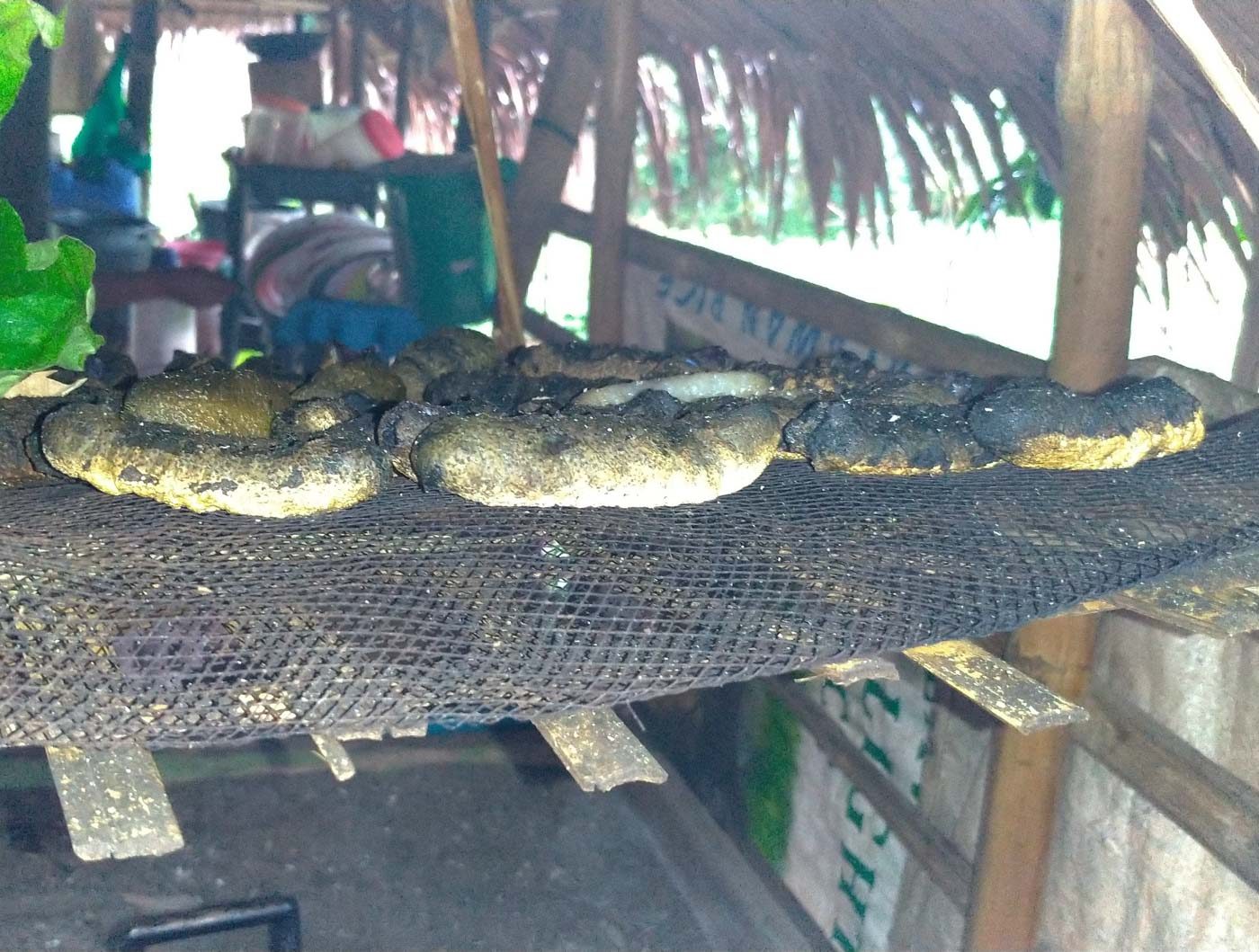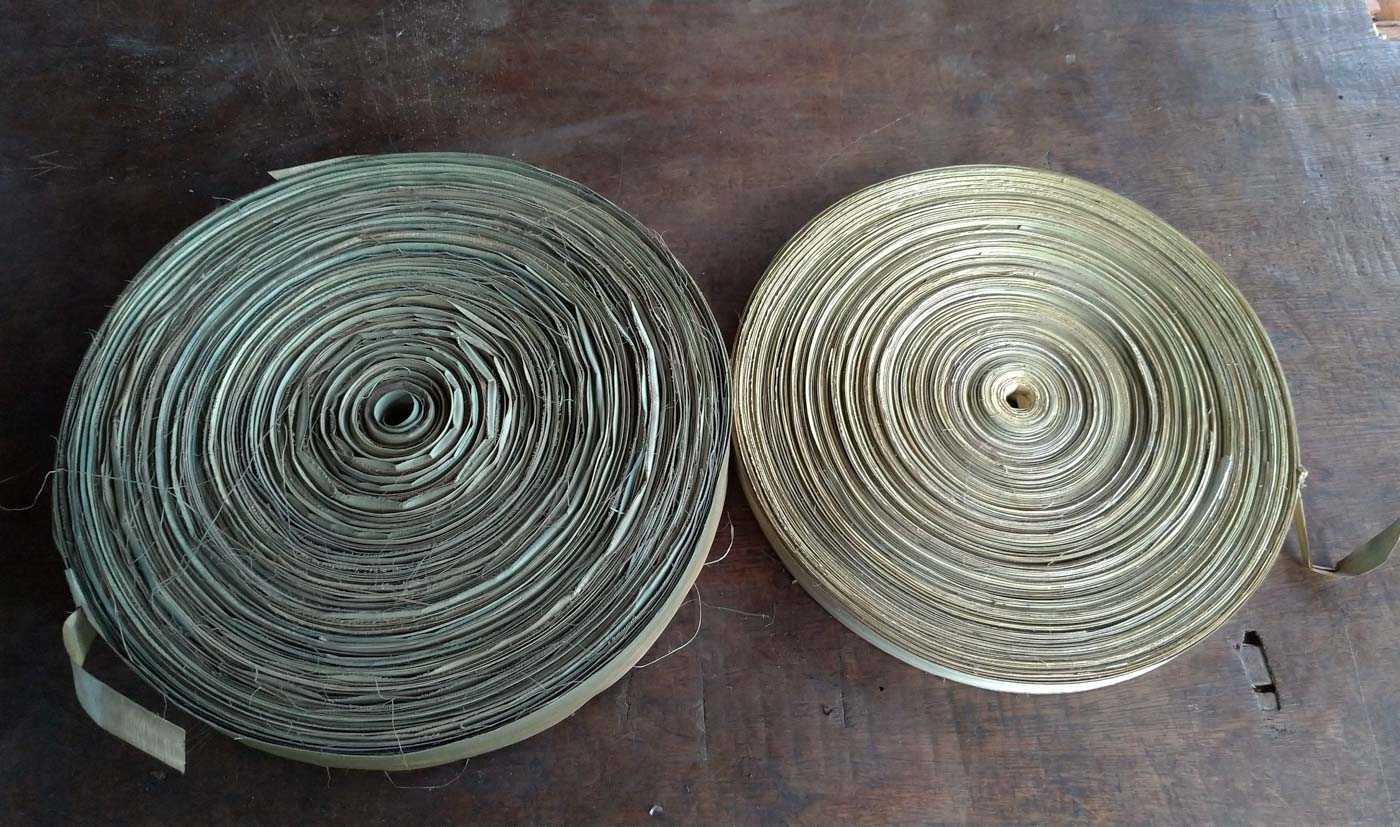SUMMARY
This is AI generated summarization, which may have errors. For context, always refer to the full article.


ALBAY, Philippines – A recently concluded research on sea cucumber confirmed that Narra town in Puerto Princesa, Palawan, is suitable for profitable sea cucumber (locally known as balatan) farming.
Sea cucumbers have been used as food and medicinal cure in Asian countries, especially in China. The demand for it expanded because of aquaculture and biomedical research programs, according to a 2011 study published at National Center for Biotechnology Information (NCBI).
Western Philippines University’s Rodulf Anthony Balisco, the project head of the 2019 research on sea cucumber said “Rasa Island and Caguisan are suitable sites for sea cucumber culture because both have good seagrass cover, where sea cucumber species are commonly found, particularly the sandfish (Holothuria scabra) which is among the highly exploited invertebrates because of its high commercial value.”
He added that seagrass protects species from strong wave actions, making it perfect for culture and sea ranching activities.
In return, sea cucumbers help make seagrass beds productive by distributing nutrients (pooping) and removing excess organic matter in the sediment and water (eating), according to The Nature Conservancy.
The Filipino researchers stocked the sites in Rasa Island and Caguisan with juveniles (3.8 to 5.8 grams) produced from a local hatchery to reduce dependence of wild collection and determine if sea cucumber stocks can grow well under Narra’s environment.
The said project is supported by Rasa Island Protected Area Management Board and the local government of Narra, with funding support from USAID Protect Wildlife.
However, the proposed coal plant in Narra – which now has an environmental compliance certificate from the Department of Environment and Natural Resources – threatens this development, especially since these are within the 50-kilometer radius zone of Barangay Bato-Bato, the coal plant site.
“This can also affect the sea cucumber growth if untreated water is discharged to the sea, along with siltation from road construction and mining,” Balisco said.
Retired US scientist Bing Guieb said the day in and day out discharges of volumes of polluted waters along the coastline will inevitably result to bioaccumulation of toxic elements by the marine organisms in the long run. That is regardless of constantly meeting the environmental quality standards through monitoring and sample.
Will this discourage sales from Puerto Princesa and affect the overall production of the country, since there are major buyers of export marine products in the city? According to the NCBI study, the Philippines is one of the major producers of sea cucumber worldwide, next to Indonesia.
Livelihood for Tagbanua tribe
Besides farming, some locals in Narra are also involved in sea cucumber collection for a living.
They hunt it at night during low tide in seagrass beds, said Elisabeth Alisto, a resident in Barangay Caguisan. She would gut and boil their catch on the shore, and smoke and sun-dry it at home.
Aguilardo Deig, a leader of the Tagbanua tribe in Caguisan, said it is a livelihood for almost every household in their community that even the juveniles get caught.
Culturing sea cucumber, or putting them in contained areas where they can grow and breed, will regulate gathering, he said.
The tribe’s balatan culture project is a tie-up with the Municipal Agriculture Office (MAO) of Narra. The Bureau of Fisheries and Aquatic Resources provided the cage, and juveniles collected in the wild from nearby areas served as their initial stocks.
Their average harvest every December is 20 kilograms of dried cucumber equivalent to ₱20,000, which they divide among 17 members of the Samahang Mangingisda ng Caguisan.
Deig hopes at least 5 hectares from their coastline would be declared a protected area like in Pangasinan to prohibit the collection of sea cucumber within the area.
According to him, those who dive in the deeper portion of the sea to catch larger individuals of sea cucumbers can earn up to P30,000 a month. He said they’ll earn more from this if they protect its feeding ground and breeding areas.
The Zoological Society of London-Philippines also calls for the inclusion of seagrass among marine protected areas in the country.
According to ZSL-Philippines’ Mary Rose Lopez, Palawan should promote seagrass conservation not only because of their role in dugong conservation, but also because of their significant contribution to food and income in coastal communities.
Balisco, meanwhile, reiterated the need for the Rasa Island Wildlife Sanctuary to be fully protected.
According to a 2017 study, “sea cucumbers and other marine organisms were found to have recovered in effectively managed marine protected areas, but species and biomass recovery is not possible in partially protected areas” like Rasa Island Wildlife Sanctuary.
“If properly managed, mature sea cucumbers may reproduce and can be source of juveniles for adjacent and nearby areas,” he said.

Long-term benefits
The next step of the research on sea cucumber is to coordinate with the local government of Narra to provide a sea cucumber fisheries management plan that will benefit local constituents. There are also plans to capacitate MAO staff on sea cucumber hatchery operation.
Teaching locals how to process sea cucumbers into the dried form would also mean higher income for them, while introducing another livelihood like weaving could give the women a break from hunting it.
The sea cucumber juveniles stocked in April 2018 are now mature individuals capable of reproduction and contributing to the local populations.
It may not significantly increase the sea cucumbers catch of fishermen in the short term, but these will serve as breeding population to replenish depleted areas, if protected with selective harvesting (>400 grams), Balisco said.
Making a kilogram of dried sea cucumber usually takes time, except during peak season (January to July), or when they’re processed as a group. Either way, there must be a sustainable way of harvesting this important resource which costs P3,500 to P6,000 per kilogram. – Rappler.com
Add a comment
How does this make you feel?
There are no comments yet. Add your comment to start the conversation.